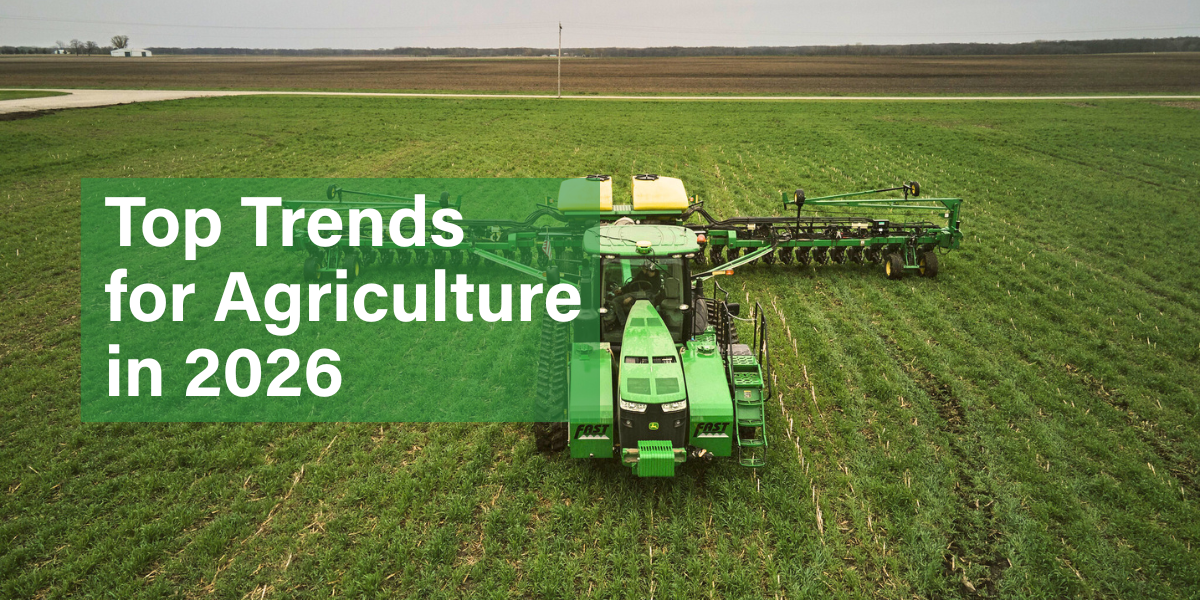Farming has always been a race against time as weather, pests and disease don’t wait for a time that’s convenient for you. Over the years, agricultural innovators have worked relentlessly to develop technology that provides tailored and timely solutions for each field.
That’s where agricultural drones buzz into action. These innovative tools help producers adapt faster, work smarter and maximize every inch of their fields.
Agriculture was first introduced to aerial technology through the use of airplanes and satellite imagery. These early innovations gave farmers a new perspective by allowing them to analyze their crops from a bird’s-eye view. They opened the door for drones, which offer an enhanced level of flexibility, efficiency and precision.
In the 2010s, drone manufacturer DJI began producing user-friendly drone models that were affordable and easy to operate. Drones were primarily used for detailed aerial imagery, which allowed farmers to survey land, monitor crop growth and identify field issues.
Now, new manufacturers have entered the scene with drones adapted and outfitted to apply fertilizers and pesticides, manage irrigation and collect data. Drones are transforming modern farming, according to Brady Holst, Illinois Soybean Association (ISA) Vice Chairman and At-Large Director. He was an early adopter of drone technology. Holst operates a soybean-and-corn row-crop farm with his dad and brother in Augusta, Ill.
Holst is an agricultural innovator at heart. Before returning to the family farm, he graduated college with an engineering degree and worked in product development and aftermarket agriculture.
With his deep interest in technology, Holst was eager to learn about drones when his dad introduced two DJI T30s to their farm in 2020. It didn’t take long for the benefits to show.
“The drones helped a lot the first year we had them,” Holst says. “We ended up spraying all our corn acres with them because it was really wet during our fungicide window. If we didn’t have the drones, we would’ve applied the fungicide with a plane. They basically paid for themselves in Year One.”

Brady Holst, ISA Vice Chairman and early adopter of drone technology, uses aerial tools on his family’s Augusta farm to improve efficiency, apply inputs and monitor crop health.
Holst said that they’ve continued to spray fungicide on corn and wheat. With tall crops, rough field terrain and several tree lines to navigate around, it’s not always feasible to use a traditional sprayer. Plus, fungicide is sprayed during a narrow window of time. If conditions aren’t conducive for a ground sprayer, drones can spray more easily than a crop duster and still get the fungicide applied during the proper time.
“The drones work well for smaller fields, as we don’t have to run over as much corn,” Holst says. “There are a lot of corners of our fields that you can actually see on the yield maps where the fungicide doesn’t get put on as well. The drones can go right up to the tree edges and get the hard-to-reach places. In fields like that, they’re a huge advantage over crop dusters.”
Since they have the technology, Holst and his family use drones to effectively manage other facets of the farm, including their test plots.
Holst said he prefers using drones to spray smaller strips on his test plots, compared to the larger passes a ground sprayer would take. Drones make it easy to swap chemicals, so he can test which products work best on his crops.
“If we used the full-size sprayer on our test plots, we would have to fill up a lot more gallons and spray larger strips,” Holst says. “It’s easy to do a lot of strips in a day because you must refill the drone every four acres. You can switch products quickly and run multiple products in a single day.”
Holst and his family were self-taught drone operators. When they started implementing the technology on their farm, there were not many training resources available. Drone use is all about balancing battery life and inputs, Holst said, which presented a steep learning curve.
“Drones are quite a bit different than all the other machinery that’s out there because they have a higher level of autonomy compared to auto steer and similar technologies,” Holst says. “It definitely takes time to get comfortable with them.”
When Holst started using drones on his operation a few years ago, not many farmers were implementing the technology. With expanded resources, cost-effective options and access to service providers, drones are only becoming more popular.
For those looking to implement drone technology on their farm, Holst recommends connecting with an experienced operator.
“It’s helpful to learn from someone who’s run drones for longer,” Holst says. “You would learn more tips and better strategies for how to lay out your fields, as opposed to finding out through trial and error.”
Drones are revolutionizing American agriculture one field at a time. The technology mitigates longstanding issues and allows farmers to run more efficient, full-coverage operations. For Holst, drones are only the beginning of the story.
“There’s real value in keeping up with modern technologies,” says Holst. “You’ve got to stay ahead of the game to keep the farm going.”

An aerial view shows Holst walking through one of his soybean fields, where drone technology is transforming how farmers scout crops, apply inputs and make data-driven management decisions.
Recent Articles
See how ISA is driving innovation in soybean production by investing in farmer-led research and equipping growers with tools for the future.
By
What's in store for farmers in 2026? Illinois Field & Bean sits down with some of Illinois Soybean Association’s Corporate Partners to find out what they’re anticipating in the new year.
By Ashley Rice-Haddon, Illinois Field & Bean Magazine, Lead Writer

